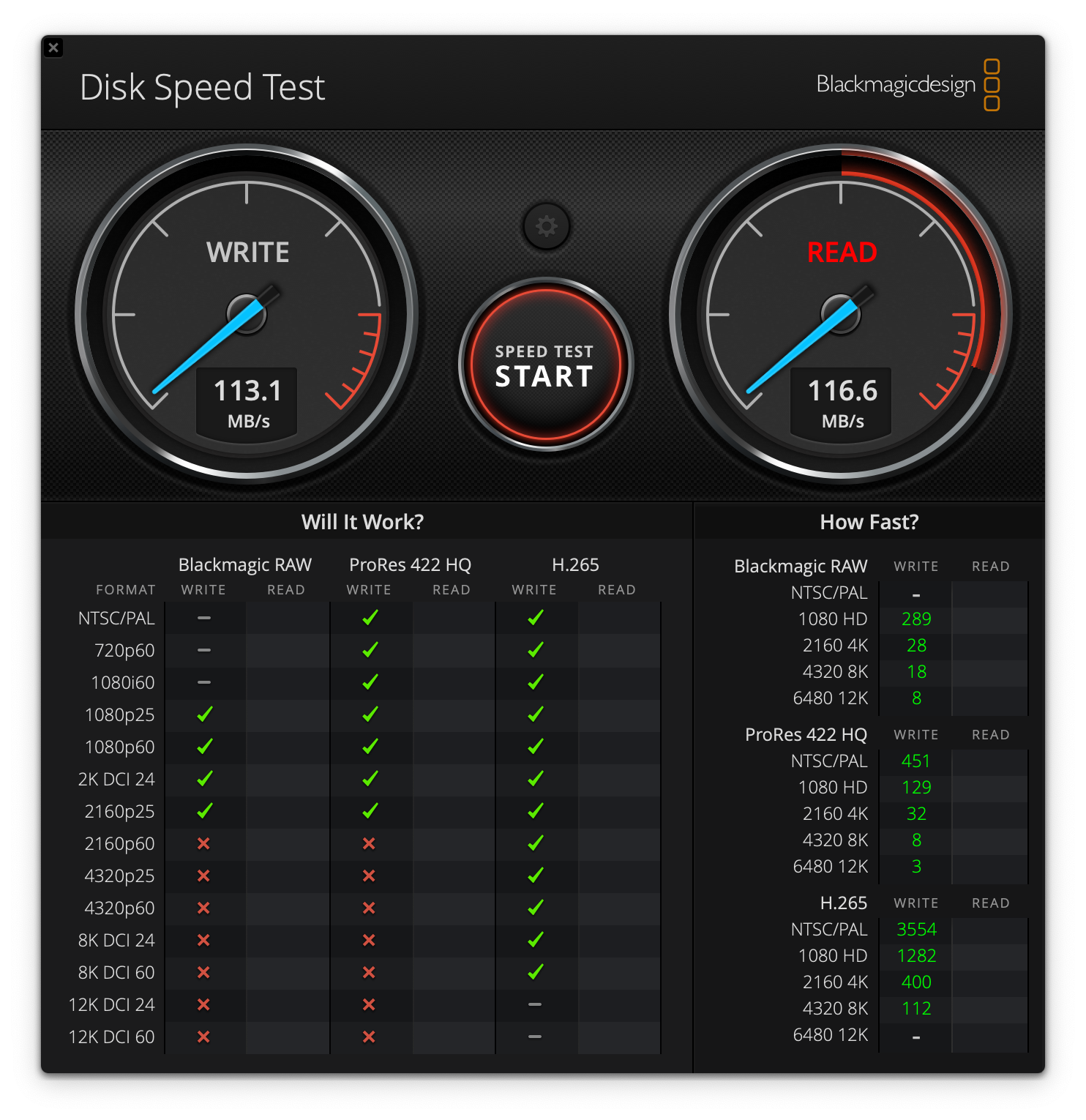Expert’s Rating
Pros
- Ruggedized and weatherized
- Up to 6TB of capacity
- Good 2.5-inch HDD performance
- Cheap per terabyte compared to SSDs
Cons
- Not an SSD
- A bit bulky for a 2.5-inch hard drive
Our Verdict
SanDisk Professional’s sturdy, jacketed, weatherized ArmorATD USB hard drive ships with up to 6TB of capacity and is a good performer for the ilk.
Best Prices Today: G-Drive ArmorATD
$174.99
External 2.5-inch hard drives have been stuck at 5TB of capacity for a number of years, but WD/SanDisk has just released a peck of new 6TB drives, including the impressively ruggedized and weatherized SanDisk Professional G-Drive ArmorATD that’s the subject of this review.
SanDisk Professional G-Drive ArmorATD: Features
The ArmorATD is a bulkier-than-usual, external 5Gbps 2.5-inch USB hard drive available with up to 6TB of capacity. In this case, bulk is a good thing as it provides room for shock absorption and crush resistance (up to 1,000 pounds/454 kilograms). Though we don’t have the means to test the ArmorATD with 1,000 pounds of pressure, the construction of the drive leads us to belive the claim. The drive also carries an IP54 rain/dust rating.
Part of the 5.1 by 3.45 by 1.15-inch (13.30 by 8.76 by 2.92 centimenters), 13-ounce (0.37-kilogram) heft of the G-Drive ArmorATD is a silicone jacket that covers the edges, corners, and ends. This includes a captive silicone plug covering the USB-C port. WD/SanDisk bundles both USB-C to USB-C and USB-C to USB-A cables so you can use it on any computer.
The warranty on the G-Drive ArmorATD is three years, limited. “Limited” with hard drives generally refers to major physical abuse such as dropping it from the Empire State Building, running it over with a steam roller (now generally gas- or diesel-powered!), or baking it in an oven.
SanDisk Professional G-Drive ArmorATD: Price
That the ArmorATD wasn’t pricier is surprising, given the extra material required for ruggedizing/weatherizing. It’s only marginally more expensive than the WD My Passport Ultra for Mac and ships in 1TB, 2TB, 4TB, 5TB, and 6TB flavors.
As typical with hard drives, the price is better per terabyte when you go with the larger capacities. As of the time of this writing, the 6TB ArmorATD is $230/£226, which is about $38/£38 per terabyte. However, the 5TB model is the current sweet spot for price/capacity in our estimation–it was $170/£170, which is $34/£34 per terabyte.
SanDisk Professional G-Drive ArmorATD: Performance
Being a 2.5-inch hard drive, the ArmorATD’s performance is not going to look sexy compared to SSDs. We did use hard drives for decades and still managed to get along.
The 110 to 140MBps or so that the ArmorATD reads and writes at is plenty fast enough to stream music and audio (multiple streams), record video, and back up using Time Machine or some such in the background. Note also that the ArmorATD approached 140MBps under CrystalDiskmark 8 on the PCWorld test bed’s USB 3.2×2 port–10MBps faster than the WD My Passport Ultra for Mac, or the stirringly named “My Passport, Works with USB-C” drive. Factor that into your buying calculation.
The Blackmagicdesign Disk Speed Test numbers for the ArmorATD are slightly better than the My Passport Ultra for Mac, and right on par for an external 2.5-inch hard drive.
The G-Drive ArmorATD’s performance under AmorphousDiskMark is about average for an external 2.5-inch hard drive.
Should I buy the G-Drive ArmorATD?
I can’t think of an external 2.5-inch hard drive that outstrips the SanDisk Professional G-Drive ArmorATD in terms of ruggedness, weather-proofing, features, or performance. It’s no small fry, but it’s a travel beast–in the best possible sense.
See how it compares to other hard drives for Mac in our round-up of the best.
Macworld: How we test storage devices
Macworld runs Blackmagicdesign’s Disk Speed Test and AmorphousDiskMark 4 with the drive formatted to APFS. But we also put drives through sister publication PCWorld’s battery of tests as follows:
IDG storage testing currently utilizes Windows 11, 64-bit running on an X790 (PCIe 4.0/5.0) motherboard/i5-12400 CPU combo with two Kingston Fury 32GB DDR5 4800MHz modules (64GB of memory total). Both 20Gbps USB and Thunderbolt 4 are integrated to the back panel and Intel CPU/GPU graphics are used. The 48GB transfer tests utilize an ImDisk RAM disk taking up 58GB of the 64GB of total memory. The 450GB file is transferred from a 2TB Samsung 990 Pro which also runs the OS.
Each test is performed on a newly NTFS-formatted and TRIM’d drive so the results are optimal. Note that in normal use, as a drive fills up, performance may decrease due to less NAND for secondary caching, as well as other factors. This is less of a factor with the current crop of SSDs with their far faster NAND.
Caveat: The performance numbers shown apply only to the drive we were shipped and to the capacity tested. SSD performance can and will vary by capacity due to more or fewer chips to shotgun reads/writes across and the amount of NAND available for secondary caching. Vendors also occasionally swap components. If you ever notice a large discrepancy between the performance you experience and that which we report, by all means, let us know.
Source : Macworld












